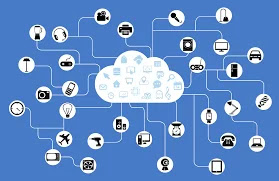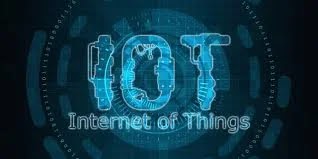Today, I'm here again to share with you the frequently misunderstood term of Machine to Machine and How is it different and similar to IoT?
So, welcome to bigforsure and this is
What's the difference between IoT and M2M?
- Intro:
So, welcome to bigforsure and hope you get a worthy knowledge from this discussion.
To say that we are in the "internet of things" (IoT) era is a misnomer because machines are not just connected to each other, but also to their environment. The IoT and M2M sphere is at the intersection of society, technology, and business.
- What is the difference between M2M and IoT?
The Internet of Things (IoT) is the interconnection of physical objects, software systems, sensors, and other technologies all under a single networked platform--the internet. Some examples of IoT include home automation systems, autonomous vehicles, wearable computing devices, and radio frequency identification tags in cars or homes.
Also read: Why can't IoT and Security fit in a same box?
The Internet of Things (IoT) has become a real phenomenon. It’s so pervasive that many people consider it to be part of their daily lives.
Machine-to-Machine (M2M), on the other hand, refers to devices communicating with one another. For example, a mobile phone communicates with a car through a sensor network that allows the car's passenger to drive and make calls at the same time.
Machine-to-machine (M2M) connectivity refers to communication between machines through short-range wireless linkages. M2M allows for more efficient communication between machines, as opposed to IoT which has been criticized for being too small scale in nature and not scalable for mass adoption.
It is typically used in telematics applications such as fleet management and fleet tracking. M2M signals are typically transmitted electrically over unshielded transmission media such as digital subscriber lines (DSL), cable television systems, or microwave links.
Some examples of M2M applications include medical diagnostics, remote control for vehicles, production control for factories and controlled deliveries; industrial machines like forklifts or mobile robots; or smart meters for energy usage management.
The Internet of Things is also known as machine to machine (M2M). This term refers to machines interacting with one another over communication channels via WiFi or Bluetooth or other types of wireless connections using some sort of technology.
These types of systems have largely been restricted to transportation applications where they can have applications in healthcare, industrial manufacturing, agriculture, and home appliances. There are similar examples that apply across many other fields including energy or utilities.
- Similarities between IoT and M2M:
Things in the physical world are turning into things that are "connected". This is a new trend that will continue to evolve as more and more devices, from your refrigerator to your car, become "smart". This is when the term Internet of Things (IoT) enters. IoT refers to the connective network of devices and networks.
According to International Business Machines (IBM), the Internet of Things (IoT) is the use of devices and computer applications on a networked basis. In other words, it is the network of devices and applications that are connected to each other.
In other words, this is when we start talking about the Internet of Things (IoT). In fact, there may not be a better way to describe IoT than M2M or Machine-to-Machine (M2M). According to IBM's report 2012 State of Enterprise IT Trends, M2M systems have become increasingly popular over the past few years.
The report estimates that 20% of global transactions are now executed through M2M channels in 2012. This will only increase in 2013 once large amounts of data become available for analysis by machine learning algorithms.
Somewhere along the line there was always going to be some sort of connective network for all kinds of machinery as technology evolved -- but it wasn't until we started talking about "Internet" -- that we started thinking about an interconnected world where machines would communicate with each other without having anyone on top controlling them.
In other words, today we're at a point where we can talk about Internet connectivity and machine-to-machine connectivity, not just device connectivity. It's not just enough for our cars or appliances or anything else moving around us; it needs people to operate them too because they need people with control over them.
Must read: What is the Internet of Things? How IoT helps businesses?
Just think how many times you've been stuck at work because your cars won't move forward or you don't know what direction they're going? How many times did you wish someone knew how much gas/oil was left in your car so you knew if it was time to fill up?
How much gas do I need today? How long until my next delivery? What temperature is it outside? All these questions would be answered by someone who had access to those answers without being told by a human being. Of course, this tech can really shape the future and change our lives drastically. But, we need to adopt them first!
Conclusion:
Internet of Things (IoT) is a buzzword that has been used to describe a number of interconnected devices. IoT refers to the way the Internet is organized, and what applications are available over this network.
IoT includes everything from video cameras and wireless speakers to refrigerators and home appliances. Machine to Machine (M2M) is a term used for the systems that connect machines and devices with one another, such as switches, sensors, actuators, and power supplies.
M2M systems can be connected to the internet or an intranet (a local area network), but typically connect to one another over a wide-area network, such as the Internet Protocol (IP). In a nutshell, IoT is more than device connectivity, as it is the network of connected devices . . . The more you know about IoT, the better you will understand M2M.
So, here's the end and I hope understood very well. If you have any queries, plz tell me by posting a comment or plz reach out to me through the Contact us page.















Great information!
ReplyDeleteYour post clearly tells us the similarities between IoT and M2M systems in a very easy way. With IoT technology, you can access everything from anywhere digitally. And this information will be secure in the IoT data platform